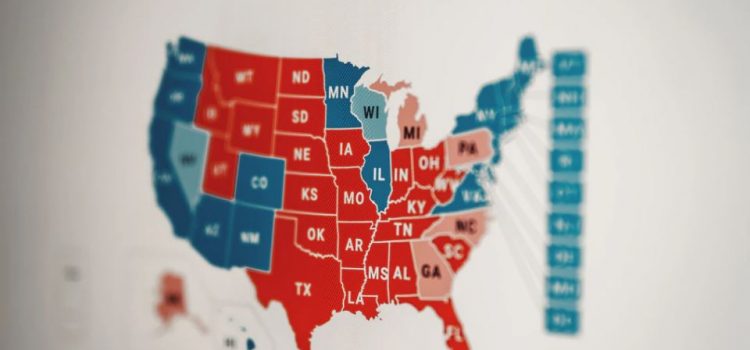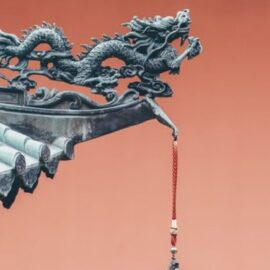

This article is an excerpt from the Shortform book guide to "Caste" by Isabel Wilkerson. Shortform has the world's best summaries and analyses of books you should be reading.
Like this article? Sign up for a free trial here .
Why have progressive politics in America started to slow down and, in some cases, even move backward? How did the election of Barack Obama divide the country?
The election of Barack Obama as the 44th president of the United States was an important step forward for Black representation and for racial equality. However, the election had some unexpected consequences and ended up setting back some diversity and equality progress due to many white Americans wanting revenge.
Here’s what Isabel Wilkerson, the author of Caste, had to say about the fallout of progressive politics in America.
The 2008 Election
According to the author, caste tensions in post-Civil Rights era America simmered beneath the surface until the 21st century. The first harbinger of renewed racial animosity and progressive politics in America was the 2008 election of Democrat Barack Obama and the resulting vengeful quest by many white Americans to restore power to the dominant caste.
(Shortform note: Barack Obama’s successful campaign for the 2008 election presented such a threat to the established racial order that assassination was a looming threat. As a result, the Department of Homeland Security authorized Secret Service protection for then-Senator Obama beginning in 2007, a full 18 months before he was first elected president. This is the earliest any president has received Secret Service protection.)
White America’s Revenge
Most white Americans didn’t vote for Obama in either of his elections. According to the author, only 43% of white Americans voted for Obama in 2008, or two in every five white voters. The percentage dropped to 39% in 2012. (Shortform note: In contrast, a full 95% of Black voters voted for Obama in 2008 and 93% voted for him in 2012. Additionally, the 2008 election saw a surge of minority voters, who made up a bigger share of the overall electorate than ever before.)
These numbers aren’t surprising because most white voters lean Republican. Wilkerson believes this is because, since the 1960s, the Republican party has positioned itself as the party that upheld Christian values, maintained laws that favored the dominant caste, and pushed against efforts to grant access to those seen as inferior. In contrast, the Democratic party branded itself as the party that represented all people, regardless of race or economic status.
The line was drawn between the political parties following the path paved by the caste system. In response, many white voters, even those claiming to be progressive, switched allegiance to the Republican party because it represented their race’s interests. Therefore, white voters saw Obama’s election as a threat to not only their political identity but their racial identity as well.
(Shortform note: According to political scientist Vincent Hutchings, the Black exodus from the Republican party began even earlier, in the 1930s, because Black voters approved of Democratic president Franklin Roosevelt’s economic response to the Great Depression. By the 1960s, two-thirds of Black voters were already registered Democrats; by 2014, almost 90% of Black voters were Democrats. White voters, on the other hand, are much more split: About 51% lean Republican while about 43% lean Democratic.)
The Plot to Win Back America
According to the author, many in the dominant caste did everything they could to make Obama’s presidency as difficult and ineffectual as possible. Congress denied or created barricades to almost every action Obama attempted to make, forcing him to rely on executive orders to accomplish anything. (Shortform note: While Obama did have to contend with a hostile Congress as Wilkerson describes, his use of executive orders wasn’t out of the ordinary. According to data from the American Presidency Project, Obama issued roughly the same number of executive orders in his two terms in office as his predecessor, George W. Bush, whose party dominated both the Senate and the House of Representatives during his presidency.)
More damaging in Wilkerson’s eyes were the efforts to push back racial progress. Republicans created several laws aimed at making it harder for many Americans to vote. Several states erased approximately 16 million voter registrations and required new registration procedures that made it easier to deny someone their right to vote. One such strategy was the requirement of new state-sanctioned IDs that were difficult to obtain and could be dismissed for something as small as a misplaced apostrophe in a name. These restrictions specifically targeted marginalized communities. (Shortform note: Wilkerson doesn’t go into detail explaining why these laws are so discriminatory. According to the ACLU, up to 11% of U.S. citizens don’t have government-issued photo identification. That’s because these forms of ID (like driver’s licenses and passports) cost money, and people from marginalized groups are less likely to have discretionary income to spend.)
In addition, Wilkerson describes how the number of hate groups in America doubled during Obama’s first term, as did anti-Black sentiments in mainstream society. The dream that Obama’s election was a sign of a post-racial America quickly evaporated. (Shortform note: Wilkerson is right to conclude that white reactions to Obama’s election caused the sudden surge in hate groups. One scholar found that the rate of new hate groups slowed significantly after 2016 because “Trump’s election signaled the closing of the perceived threats that drove hate groups to form during the Obama administration.”)
A Dangerous Consequence of Backlash
According to Wilkerson, the result of this resurgence of hate and anti-Black sentiment was increased violence against Black Americans. Harkening back to the days of Jim Crow lynchings, unarmed Black citizens were killed during encounters with law enforcement at an alarming rate. The number of incidents grew to such a degree that studies found that Blacks were five times more likely to be killed by police than whites were, making death at the hands of police a leading cause of death for Black males. Black men and boys suddenly had a 1 in 1,000 chance of dying at the hands of police officers.
(Shortform note: The data for deaths in police custody have additional nuances that Wilkerson doesn’t cover. Research shows that, overall, Black men are more than twice as likely to die at the hands of police officers than white men. However, age plays an important role: For white men, the risk of being killed by police is most concentrated between the ages of 20 and 35, after which it dwindles; for Black men, the risk stays high well into their 40s. This may be because, in general, people see Black men as more threatening than white men, so officers may perceive even older Black men as threats that require force to subdue.)

———End of Preview———
Like what you just read? Read the rest of the world's best book summary and analysis of Isabel Wilkerson's "Caste" at Shortform .
Here's what you'll find in our full Caste summary :
- How a racial caste system exists in America today
- How caste systems around the world are detrimental to everyone
- How the infrastructure of the racial hierarchy can be traced back hundreds of years






